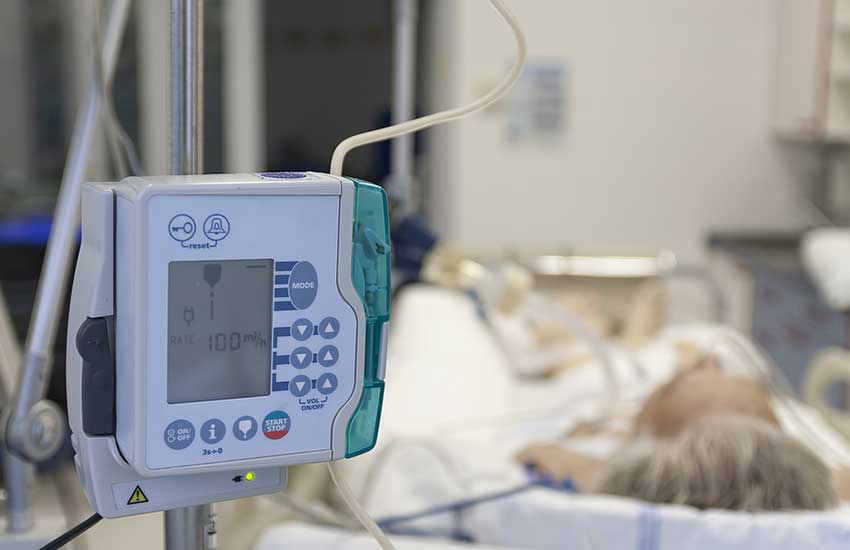Many different types and sizes of feed pumps are available on the market for both hospital and home use. To ensure proper nutrition and patient safety, selecting the right size and correctly setting the feed rate is essential.
What Is A Feed Pump?
If you’re a patient undergoing in-home care or supporting a loved one in hospice who now requires one of these machines, you may wonder what an enteral feed pump is. This machine helps deliver nutrients and fluids to your body intravenously. This fluid delivery can be essential to your care if you cannot eat or drink in a typical manner.
Like Patients, Feed Pumps Come In Many Sizes
Feed pumps are available in different sizes for each person’s body shape and weight. The feed rate refers to how much liquid food is delivered per minute and must be set according to your doctor’s orders.
A pump that gives too much food can cause discomfort and vomiting, while one that delivers too little will not provide enough nutrition. By understanding the basics of feeding pump sizing and operation, you can ensure a smooth experience.
Selecting Your Feed Pump’s Size
There are a few factors to consider when selecting the size of a feed pump:
- The volume of liquid you need to move.
- The distance the pump needs to move the fluid.
- The pressure required to move the fluid.
Some pumps are designed for a specific type of patient, for instance, infants, but others can handle large and small feeding bags. If you aren’t sure which style suits you or your patient, consult the prescribing physician.
Setting The Feed Pump Rate
Selecting an enteral feed pump flow rate may seem daunting, but it’s pretty simple. The first thing you need to do is determine the volume of formula that your patient will need per day. Use the patient’s weight and height to calculate their daily caloric needs. Divide that number by the number of calories in 1 ml of formula. Once you have the daily volume, you can use the following math to determine the flow rate, then select a feed pump capable of delivering that rate.
Flow rate (ml/hr) = Daily volume (ml/day) / Number of hours feeding + Residual volume (usually 50-100 ml)
The Difference Between Syringe, Infusion, and Feed Pumps
Syringe pumps deliver small, controlled doses of nutrients or medications and are more challenging to use with feeding tubes. Infusion pumps are the most versatile type of pump and can provide controlled amounts of fluids, including nutrients, medication, and blood, to patients. They’re usually the most expensive option. Feed pumps are specifically designed for use with feeding tubes. They often have features that make them easier to use with this type of equipment, such as pre-programmed settings and the ability to adjust the flow rate automatically.
Our Refurbished Medical Pumps Are Safe & Cost Less
Whether you purchase a feed pump, syringe pump, or infusion pump, you can rest assured when buying them from Gumbo Medical, LLC. That’s because all our used equipment undergoes a detailed eight-step refurbishing process. You can trust that our products will work as well as new ones.
- Kangaroo ePump Feeding Pump
- Alaris 8110 Syringe Pump
- Medfusion 2001 Syringe Pump
- Hospira Plum XL Infusion Pump
- B.Braun Outlook 100 Infusion Pump
Used Feeding Pumps Shipped Nationwide
If you’re in the market for used and fully refurbished medical equipment, contact Gumbo Medical, LLC today. We offer high-quality medical equipment and are committed to providing excellent customer service. Plus, you can save money and get a quality product that will meet your needs. Contact us today to learn more about our products and services!

